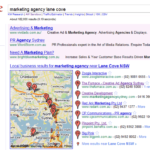Isn’t it better to catch the attention of customers who already have interest in your products, rather than catching uninterested customers and attempting to interest them? If you can reach the customers who are actually looking for products or services similar to those you are providing, you can expect that those visitors will create accounts with you. For example, in the case of topic targeting, your ads are shown on the sites that contain your selected topics, or topics that you specifically defined. In the case of interest categories, however, you define interest categories that relate to your product in AdWords, and your ads are shown to people who have been shown to have similar interests in Google Display Network.
The Interest Categorization Process
To work through AdWords to reach interested people, you should adjoin interest categories to the ad groups. AdWords maintains a precise route to connect the two parties’ categories. Google AdWords uses their AdSense partner website to define the categories of the customers. First, it investigates the contents of the sites visited by the customer, the cookies and the information found from their social networking sites, such as: Facebook, LinkedIn etc. to generate an idea of the customer’s interests. After that, the interest categories of customers are matched up to the AdWords interest categories of products or services that you defined, and your text ads are shown to the customers of those categories. These text ads are the gateway to building rapport with your clients. To establish a good first impression, you must be concise, innovative, and goal-oriented with the ads that you display.
The categories assigned to visitors by AdWords lasts for 30 days and then changes to follow changes in customers’ interest. This helps to connect businesses with the most relevant customers and help improve conversion rate. For example, if you want to show ads to those who are interested in home loans, it would cost a significant amount to advertise on a financial institute’s website; but it won’t ensure that you will get relevant customers all the time, let alone customers who will make purchases. However, if you connect interest categories to your ad groups, your ads will show up in smaller, less costly sites, to customers with interest in products similar to yours.
Why Use Interest Categories?
There is no doubt about the benefits of targeting customers with specific interests. Here are some of the key benefits of using interest categories:
- Shortlist the customers who actually share interests that complement your sites content
- Improve your overall conversion rate
- Can be used as a remarketing and conversion optimization tool on the side
- Reduce your advertising cost
- Get more purchasing/performing customers
- Improved bidding technique when you use interest categories and cost-per-click bidding together
- Generate more click-throughs and revenue
- Enhance brand awareness for your products
In general, all of these will result in an increased return on investment (ROI). If you are a smart enough AdWords user, you will definitely utilize this tool to extend your range of potential customers. It will help you become more successful by showing relevant ad texts to the customers who have demonstrated similar interests. When creating ad texts, remember to be innovative, goal-oriented, concise, and to the point.





